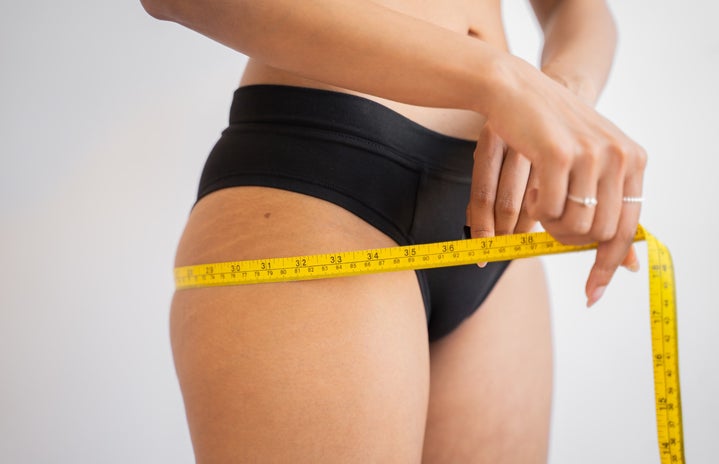“Do I look fat?” is a question women are often depicted as asking in movies and TV – and a question many may find themselves asking in real life as well. To be called “fat” wasn’t just the same thing as being called “ugly.” Being fat was a justification of dehumanization – depicted in TV shows where fat characters were often subjected to public ridicule, bullying, and unhealthy relationships (if they were dating at all). In real life, fat people face bullying and discriminatory hiring processes. This was in contrast to being seen as thin; becoming or being skinny is synonymous with beauty and worth.
The body positivity movement was created by plus-size people to specifically empower people who are plus–sized. Believing that size was just another methodology to categorize bodies by desirability, the movement sought to challenge unrealistic beauty expectations and to prove that fat bodies are beautiful too. As a result, there was a push for size inclusivity, leading to brands such as American Eagle, H&M, and Hollister expanding their size catalogues. Most notably, the Victoria’s Secret Fashion Show was cancelled, symbolizing for many the official end of the glorification of the white, skinny body.
But in the face of all this progress, the body positivity movement has evolved into a space for everyone. This would be a good thing if it meant increased inclusion and visibility of people who are disabled, have skin conditions, or don’t meet conventional standards of beauty. But instead, this has led to an emergence of people who present as thin taking advantage of the movement to talk about their bodies.
For instance, there’s a recent trend where models reveal that their stomach doesn’t always look as flat as it does in edited photos. They’ll stand straight in the first photo, and then lean over in the second, showing that they also have “fat rolls” or bloating. Some companies have even opted to not edit out fat rolls in photos on their sites.
Sienna Mae, a popular “body positive” Tik Tokker, is known for videos where she also reveals her stomach isn’t always flat. One of her most popular Tik Toks is of her proclaiming “I just ate” and showing her stomach. The comments on these posts are largely positive.
There’s definitely a need to let women, especially young girls, know that their stomach doesn’t have to be flat all the time or even at all. Companies showing female bodies as they actually are is very important. But this shouldn’t be done in a way that continues to prioritize and solely compliment skinny bodies. In contrast to thin people being commended for revealing that their stomach isn’t flat, fat people still receive backlash for their appearances.
In the earlier stages of the movement, plus-size model Tess Holiday was attacked on social media when she graced the cover of Cosmopolitan UK. More recently, Lizzo receives a litany of hate all over her social media whenever she posts anything, leading to her deleting Twitter and often limiting comments on Instagram.
These trends reveal that body positivity is only well-received when the body itself is palatable – which goes against the very point of the body positivity movement. But perhaps this was a flaw that existed from the start: even when fat people were supposedly represented, the representation was focused on hourglass figures and conventionally attractive versions of the fat body.
The word “fat” still continues to hold its power as an insult. There’s a trend on TikTok where people distort their bodies and faces to make themselves look fatter, and then reveal their actual thinner face or body for a “confidence boost.”
Perhaps this trend is just a reflection of what is seen in entertainment as a whole. As recently as 2018, Netflix released Insatiable. The movie’s plot centers around a girl who is initially fat, but loses weight and decides to inflict revenge on everyone who bullied her when she was fat. Not only is the main actress not plus-size in real life, but the plot itself is extremely problematic and only furthers the trope that becoming “skinny” is the ultimate confidence boost.
While the body positivity movement has made some progress, it’s evident that fatness and being fat have not been successfully normalized. This indicates that the initial objectives of the body positivity movement were not achieved, and suggests that there’s still a clear need to focus on those whose bodies are actually marginalized. There needs to be a discussion on how conversations about the female stomach need to stop drowning out fat people’s voices – and maybe that’s where body neutrality comes in.


